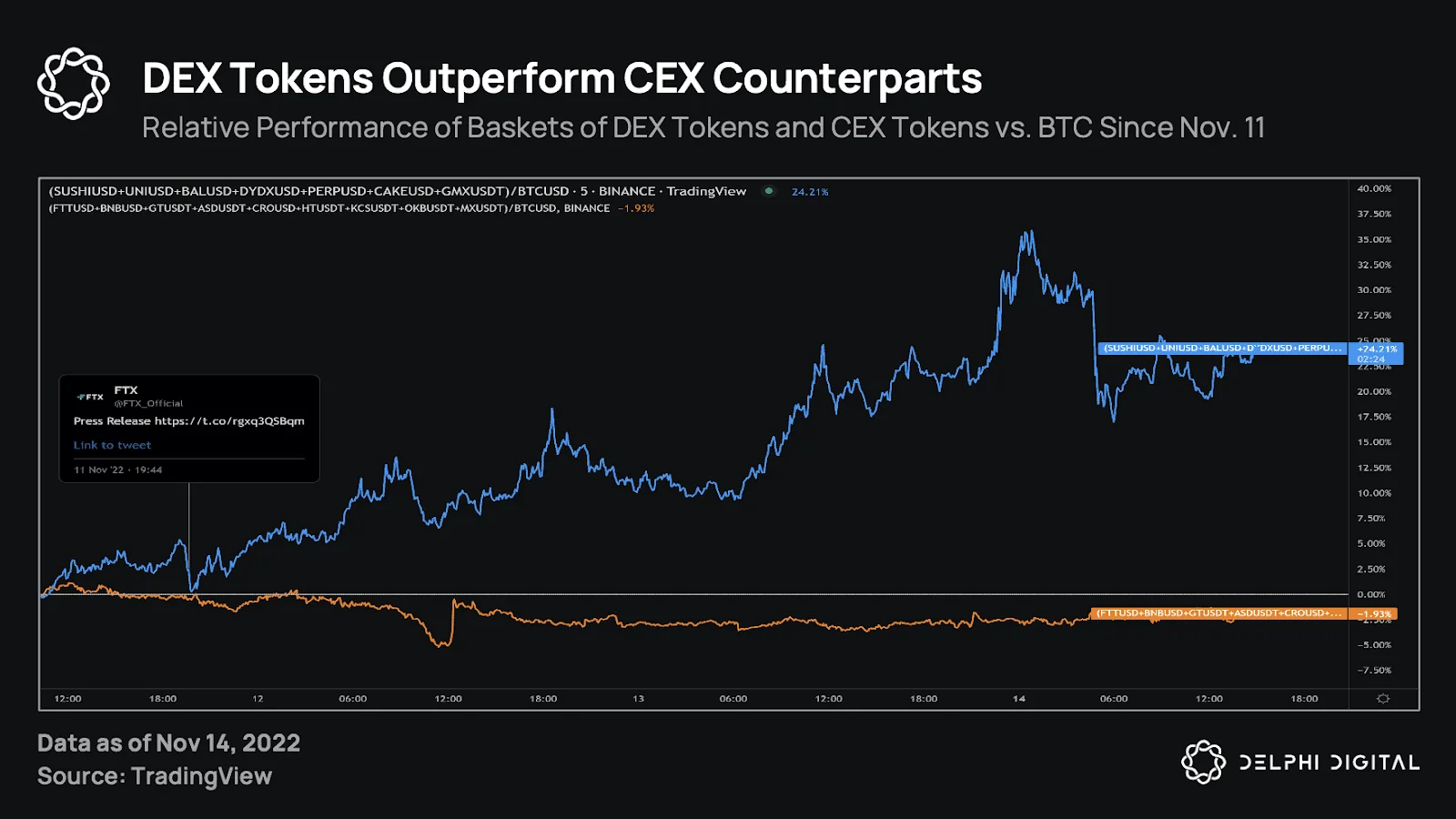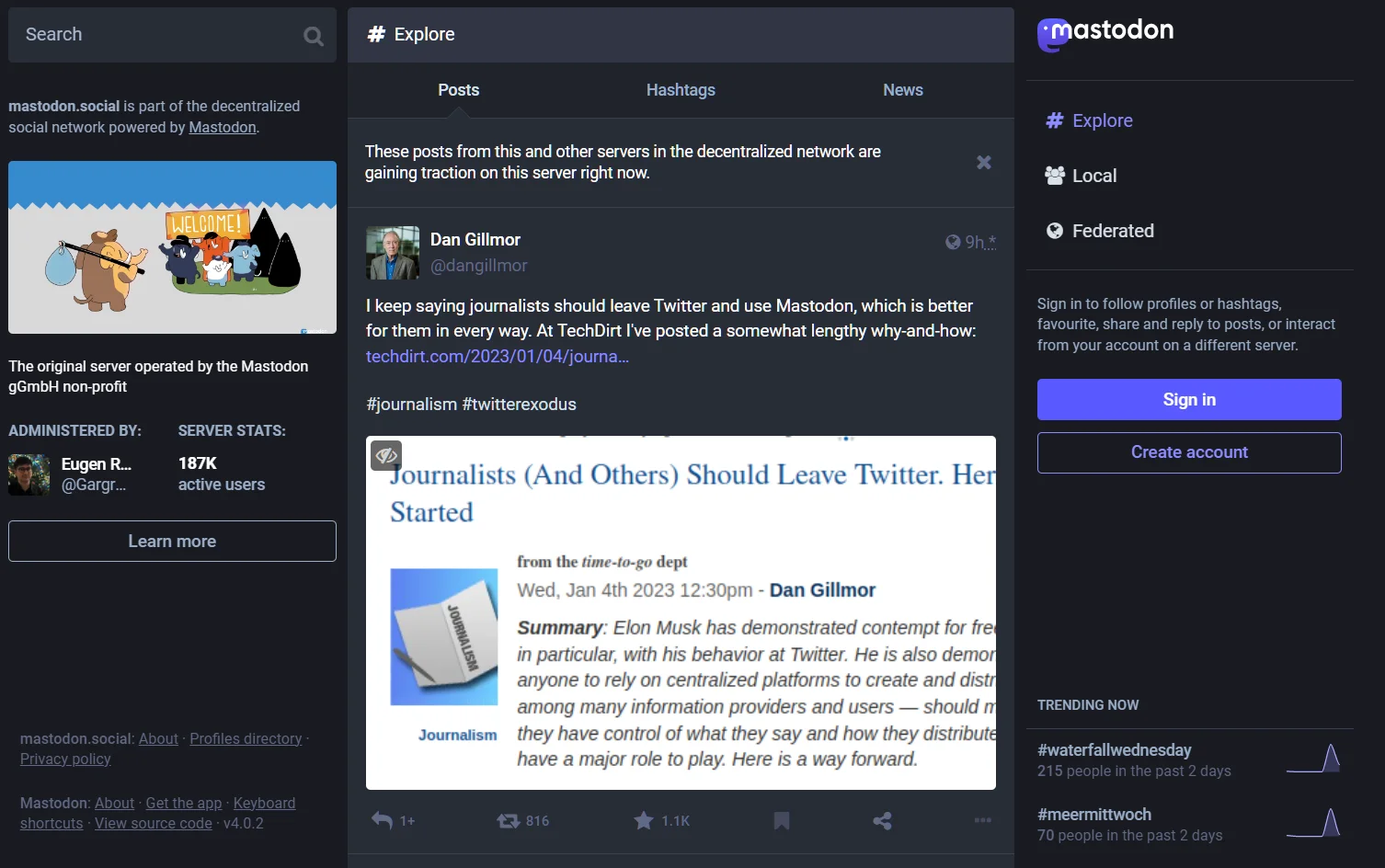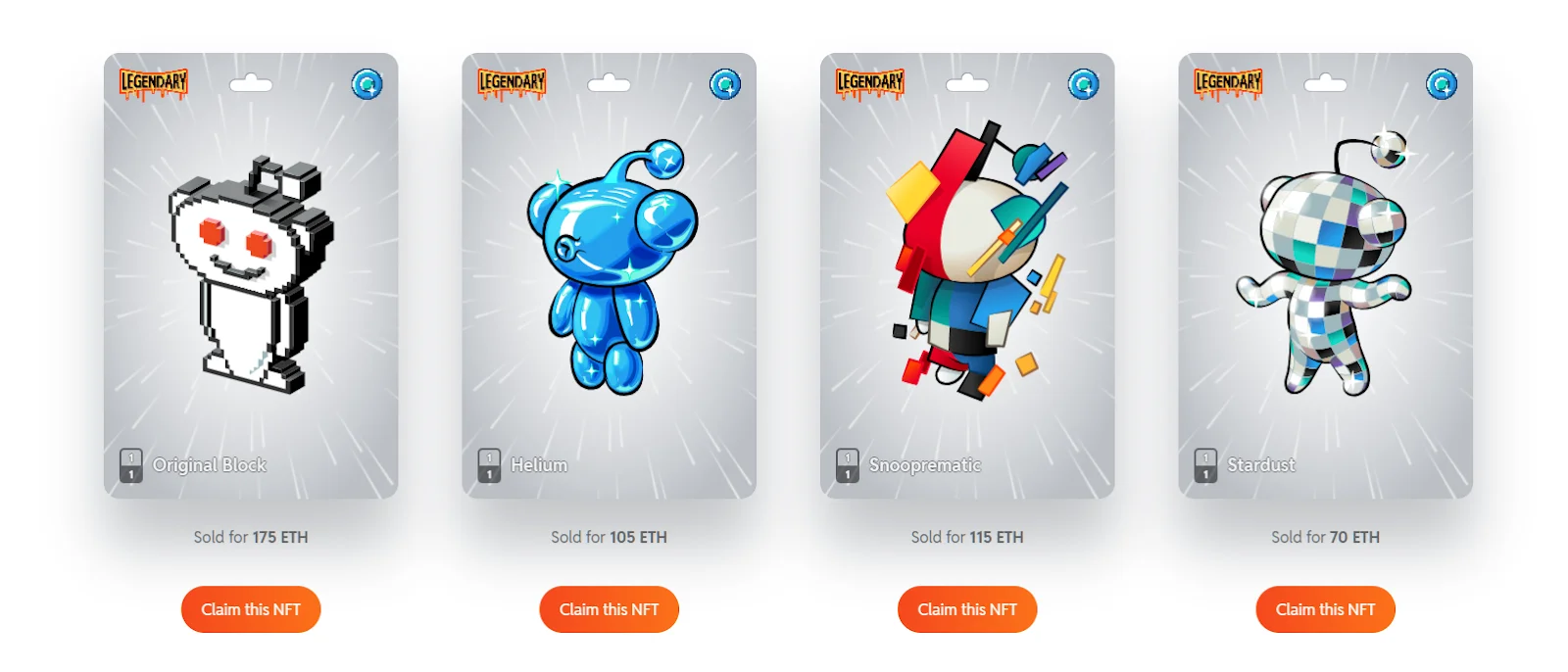
- 1
- 2
- 3
- 4
- 5
- 6
- 7
ブロックチェーンは、Webの次世代のナチュラル進化系となる勢いです。新しい非中央集権的なWebの兆候はときどき目にしていますが、今年は次のようなトレンドがますます一般化すると予想されます。2023年に出現するWeb3トレンドを探ってみましょう。
分散型取引所
昨年、いくつかの中央集権的な取引所が破綻したことで、DEXの需要が急増しました。中央集権的な取引所の支払能力が問われ、大量の引き出しが発生し、FTX、OKX、Bitfinexからの純流出額が最高値を記録しました。
このような支払能力に関する懸念が反映され、CEXトークンは著しく低迷しました。

・取引に必要な銀行や金融機関などの中間業者を排除できます。
・すべての取引がブロックチェーンに記録され、いつでも誰でも検証できるため、取引の透明性が向上します。
・従来の取引所と比較して、手数料がかからないため、低コストで取引できます。
🔸 続きを読む:分散型金融 – 暗号資産を保護するためのソリューション
分散型ソーシャルメディアネットワーク
2022年、私たちはソーシャルメディアプラットフォームがユーザーを維持するために苦戦しているサインを目にしました。また、イーロン・マスクが最近Twitterを買収したことで、人々は中央集権がもはや存在するべきかどうかさえも疑問に思い始めています。
Web2では、ユーザーは今でも参加しているプラットフォームのコミュニティ基準に大きく左右されます。しかし、Web3のソーシャルメディアネットワークでは、Web3に伴うすべての変化がユーザーのためになるので、状況は良い方向に変わる可能性があります。
Web3のソーシャルメディアネットワークでは、以下のようなメリットが期待できます。
- 透明性:Web3ソーシャルメディアネットワークのデータはブロックチェーン上に存在し、誰でも見ることができます。
- プライバシーとセキュリティの向上:ユーザーのデータは一箇所に保存されず、複数のサーバーやネットワークに分散されるため、アクセスや操作が難しくなります。
- 安定性:数千のノードからなるpeer-to-peerのネットワークで運用されるため、停電やサイバー攻撃のリスクが軽減されます。
- 言論の自由:コンテンツを検閲する単一の組織がないため、分散型ソーシャルメディアは言論の自由を促し、ユーザーが作成したコンテンツが打ち切られることはありません。
🔎 例:Mastodonは、Twitterの分散版とみなすことができます。Mastodonは、分散型バージョンのTwitterと見なすことができます。ブロックチェーン技術に基づき、動作しているわけではありませんが、「電子メールと同様の方法で動作するフェデレートネットワーク」であると説明しています。

サステナブルプロジェクト
Web3の初期導入から学べることがあるとすれば、それは短期的な思考は何にも生まないということです。例えば、ゲーム業界では、収益重視のプロジェクトがゲームの質を著しく低下させる原因となっており、誇大広告が徐々に減速する中で、人々はゲームにおいて「稼ぐ」要素を優先することがもはや有効ではないことに気付き始めています。
2023年、新興のブロックチェーン・プロジェクトでは「サステナビリティ」が新たなキーワードになっていますが、何が最善の道なのかがまだ解明されていないため、そこに至るまでには長い道のりがあります。過去の失敗したプロジェクトに基づいて、私たちは何がうまく行かなかったのか、つまり、長期性よりもマネタイズを優先させることは明らかです。
🔸 続きを読む:パブリックとプライベートのブロックチェーン比較
ゼロ知識証明
ブロックチェーン技術に詳しい人なら誰でも、パブリックブロックチェーンには、その優れた点にも関らず、検証プロセスが長すぎるといういくつかの欠点があることを理解しています。ゼロ知識証明は、これを変える態勢にあるメカニックです。
簡単に言うと、ゼロ知識証明(ZKP)は、「証明者」が「被検証者」に対して、機密そのものを明かすことなく、真の機密を有していることを証明するのに効力を発揮します。ブロックチェーンの世界では、ZKPはパブリックブロックチェーンにさらなるプライバシーをもたらすために特に有用です。
例えば、プライバシーコインであるZcashは、他の種類の暗号資産と比較して、プライバシーを強化できるZPKの一種をベースにしています。Zcashでは、取引の参加者や関係者は公開されませんが、取引に携わった人は交換された金額を知ることができ、取引外の人に機密事項をすべて明かすことなくプライベートな取引を行うには理想的な方法と言えます。
🔸 続きを読む:パブリックとプライベートのブロックチェーン比較
NFTの新たな活用事例
2022年1月にはピーク時の取引高が172億ドルに達し、昨年NFTが大流行したのも理解できます。市場は着実に安定しつつありますが、購入者に提供される価値がほとんどない既存のNFTは、ますます売却が困難になっています。
例えば、スターバックスのNFTベースのポイントプログラムや、RedditのCryptoSnoos NFTは、所有者のRedditアカウントのアバターとして使用でき、独特の光るアニメーションで飾られるなど、大手ブランドはすでに独自の実用的なNFTによって楽しいサービスに加わっているのです。

その他のWeb3関連の法規制
昨年11月初旬に起きたFTX社の破綻は、同社の代理人弁護士の一人が語るように、アメリカ企業史上、最も衝撃的で厳しい破綻の一つであったと言えます。推定100万人の債権に数十億円の損失をもたらしました。今でも、FTXの何が問題だったのかを解明するには、まだしばらく時間がかかるかもしれません。
「FTXのような大規模な破綻は、透明性の確保、適切な規制保護の必要性、すべての金融活動に対する規制要件の重要性を明確に示しています。」
香港証券取引所のLaura Chaチェアマンは、このように述べました。
昨年11月上旬のFTXの巨大企業の破綻後、ホワイトハウスでさえも、暗号資産に対する規制強化を呼びかけなければならない事態となりました。この崩壊から浮かび上がるのは、教訓の機会です。今後、同様の企業破綻が発生しづらくするために、さらなる規制が必要と判断されます。
まとめ
年が明けて、刺激的な年になりそうです。Web3.0が完全に現実のものとなるまでに、なすべきことがたくさんあるのは間違いありませんが、2023年のWeb3トレンドは、暗号資産規制の欠如、集中型ソーシャルメディア、持続不可能なプロジェクト、実用性を欠くNFTといった現在の困難の多くが、真の解決策に出会う年となりそうです。
- 1
- 2
- 3
- 4
- 5
- 6
- 7